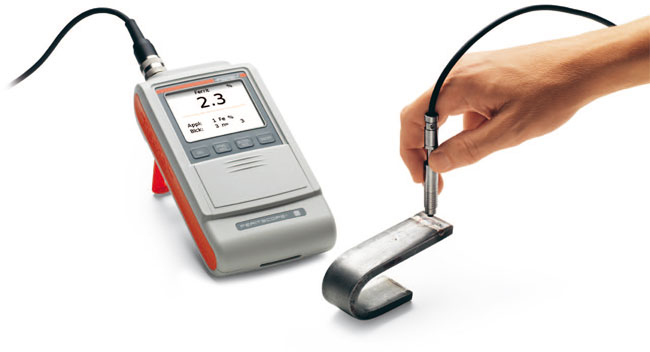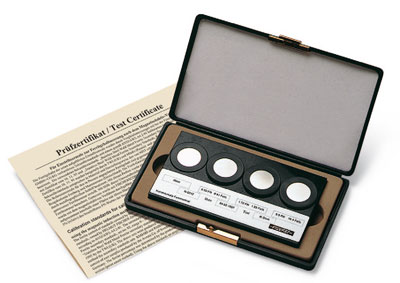FERITSCOPE® FMP30C
Measurement of the Ferrite Content in Austenitic and Duplex Steel
Features:
|
The FERITSCOPE® measures the ferrite content in austenitic and duplex steel according to the magnetic induction method. All magnetizable structure sections are measured i.e, in addition to delta ferrite also strain-induced martensite, for example, or other ferritic phases. The instrument is suitable for measurements according to the DIN EN ISO 17655. Areas of application are on-site measurements, e.g.,of austenitic platings as well as weld seams in stainless steel pipes, containers, boilers or other products made of austenitic or duplex steel.
Duplex steel is used increasingly in the chemical and petrochemical industries, e. g., for boilers and pipelines. A ferrite deficit in the weld seam area leads to strength reduction, whereas, an excess of ferrite content leads to a reduction in toughness and ductility. In particular when welding duplex steel, the ferrite content in the welding area can easily assume unfavorable values either due to unsuitable welding filler materials or through poor heat input or heat removal. Only an onsite measurement can provide the assurance that the processing did not change the optimum ferrite content in an unfavorable manner at the expense of mechanical or corrosion-resistance properties.
Simple and Quick Measurements
It is easy to measure the ferrite content accurately when using the FMP30C. Upon probe placement on the surface of the specimen, the reading is displayed automatically and stored in the instrument. The probe can also be placed on hard to reach areas. For such applications, in instrument features an "external start" function to trigger the measurements with a push of a button. This is ideal for measurements in pipes, bores or grooves.
Finding weld seams in polished surfaces is made easy through the "continuous display" instrument function. When scanning the surface with the probe with this function enabled, only the continuous readings are displayed. A change in the ferrite content reading indicates that the weld seam has been found. For easy ferrite content measurements along a weld seam, you can use the "continuous measurement capture" function. When scanning the weld seam with the probe positioned, the continuous readings are captured and stored. This provides a ferrite content profile along the weld seam.

Instrument features:
|
Measurement Capture:
|
Data Memory
Evaluation
Interfaces
| Calibration
|
Calibrations
To obtain comparable measurement results, the instruments must be adjusted or calibrated using standards that can be traced to internationally recognized secondary standards. Helmut Fischer offers certified calibration standard sets that are traceable to TWI secondary standards for corrective and master calibrations. These standards list in addition to the ferrite number FN also the %Fe values. Influences including the shape of the part measured (strong curvature, thickness of the ferrite-containing coatings, etc) can be taken into account through corrective calibrations with customer specific calibration standards or through corrective factors (included). The normalization and corrective calibration are stored application specific in the respective application memory of the instrument.
Note: To ensure end user success with the Fischer FERITSCOPE® FMP30C, we now offer the following full range Ferrite standards set, which replaces three discontinued partial range standard sets (602-279 low range, 602-239 mid range & 602-277 high range).
Model Number: 605-564
Description: Set of 5 Ferrite Content Standards, 0.3FN - 140FN (0.3-105Fe%). Ferrite Contents of approximately 0.3 FN (0.3 Fe%), 1.5 FN (1.5 fe%), 10 FN (10 Fe%), 45 FN (40 fe%) and 110 FN (80 fe%); plus a standardization base 140 FN (105 fe% saturation).

Offered for sale in North America.
The Feritscope FMP30C Standard Kit includes: Probe type FGAB1.3FE, Fischer DataCenter Software with interface cable, carrying strap, battery set, guidelines, operators' manual, calibration certificate, USB drivers on CD, Interface cable FMP / PC and Set of 5 Ferrite Content Standards, 0.3 FN-140 FN (0.3-105 Fe%).